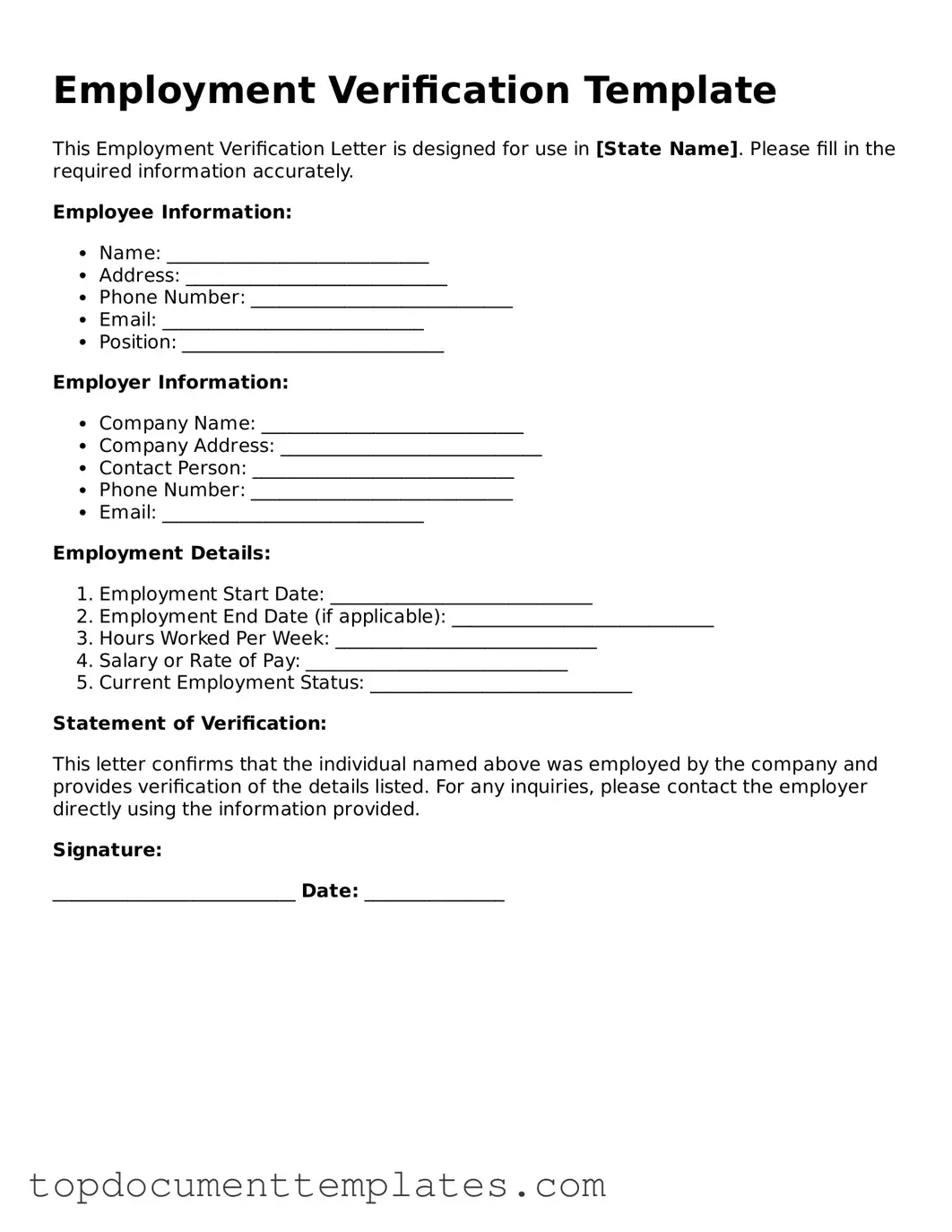Official Employment Verification Template
The Employment Verification form is a crucial document used by employers to confirm an individual's employment history, job title, and salary information. This form not only helps ensure accuracy in hiring practices but also protects both the employer and the employee in various situations. To streamline your verification process, consider filling out the form by clicking the button below.
Open This Form
